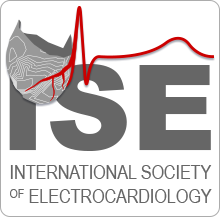Adrian: Why was important to you to get involved with the ISE?
Tom: ISE is a very special Society for several reasons. Firstly, because this is a real international society, with researchers from different continents and countries, what give us the opportunity of having a broader view of the eletrocardiography. Secondly, it is transdisciplinary, with participation of cardiologists, electrophysiologists, physiologists, epidemiologists, engineers and IT specialists. Thirdly, there are many important voices of the electrocardiology, like Antonio Bayes de Luna, Peter MacFarlane, Wojciech Zareba and many others. These persons gave a real contribution to the development of the eletrocardiology and, in ISE meetings, you have the opportunity of talking to them and discussing critical issues in the field. Finally, because ECG is still a very fascinating topic, complex, deductive and extremely important for all who are involved in the care of cardiac conditions.
A: What will be your “personal mark” during your presidency term (2019-2021)?
T: This is very difficult question, because the Society is in a row of very active and dynamic presidents and my first task would be to maintain all the improvements you are doing to ISE. My personal experience is mostly with ECG epidemiology and with the deployment of ECG services to underserved populations, and I would be very pleased if we could foster the expansion of the access to the ECG to the populations in need in low and middle income countries, where cardiovascular diseases and hypertension are now major causes of death. For this task, would need to involve other researchers from the field of epidemiology, general cardiology, primary health care and implementation science.
A: What is the role of surface ECG in Epidemiology? How do we use it?
T: ECG has been used in Epidemiology for 70 years and epidemiological studies have a pivotal role in the use of ECG in the clinical practice. The prognostic value of many ECG abnormalities, as bundle branch blocks and left ventricular enlargement, was defined by epidemiological studies, that continue to provide information on newer syndromes, as Early Repolarization and Brugada syndrome. Now, with the spread of digital ECG machines, we expect a new surge of information coming from electronic cohorts, providing more information not only about the well-recognized ECG patterns, but also from hidden features, which could be detected only by new methods of analysis and the use of artificial intelligence. I think there is a very powerful confluence of epidemiology, electronic medical records and databases, big data methods and clinical practice that can change, in the next ten years, the way we see and think the eletrocardiology.
A: Please tell us about a good ECG paper that you read in the last 12 months?
The paper by Aro et al. (below) is a recent favorite. The authors of ths study derived a very simple score based in ECG findings, from the community-based Oregon Sudden Unexpected Death Study, validating it in the Atherosclerosis Risk in Communities (ARIC) Study. It is another example on how epidemiological studies can improve the practice of cardiology by incorporation ECG findings in the clinical evaluation.
Aro AL, Reinier K, Rusinaru C, Uy-Evanado A, Darouian N, Phan D, Mack WJ, Jui J, Soliman EZ, Tereshchenko LG, Chugh SS. Electrical risk score beyond the left ventricular ejection fraction: prediction of sudden cardiac death in the Oregon Sudden Unexpected Death Study and the Atherosclerosis Risk in Communities Study. Eur Heart J. 2017 Oct 21;38(40):3017-3025.
doi: 10.1093/eurheartj/ehx331. PMID: 28662567.
A: How do we expand our Society in country like Brazil? Who should we target to get more people involved?
T: There are a lot of opportunities of expansion of the ISE in Latin America, in general, and in Brazil, specifically. With the epidemiological transition, Cardiovascular Diseases became the most important cause of death in our region and there is lot of interest in Electrocardiology, not only from specialists, but also from physicians and nurses that work with primary care and urgencies. These professionals cold be involved in courses and activities, as academic personnel from local Universities could help in this task of dissemination of the method and expansion of the Society.
A: How do you see the future of the ISE? Any role for Social Media?
T: ISE is a relatively old society that is renewing itself, recruiting younger researchers and using the current methods to divulgate its goal and to reach the health and medical community. You are somehow an example of this renovation, since you one of youngest presidents of this Society – and your youth and energy are important drives to our change. Social media is essential for all international organizations in the world now and the ISE should improve its use. The approximation with other societies with similar and complimentary interest is also important and the partnership with ISHNE, the International Society for Holter and NonInvasive Electrocardiology, is a well succeed example on how this can work.
A: Thank you very much for your time and expertise.
T: Thank you, Adrian, for all your effort and dedication to the ISE.

